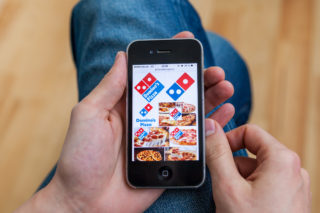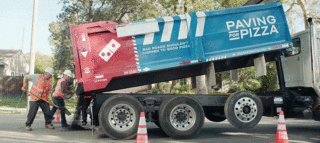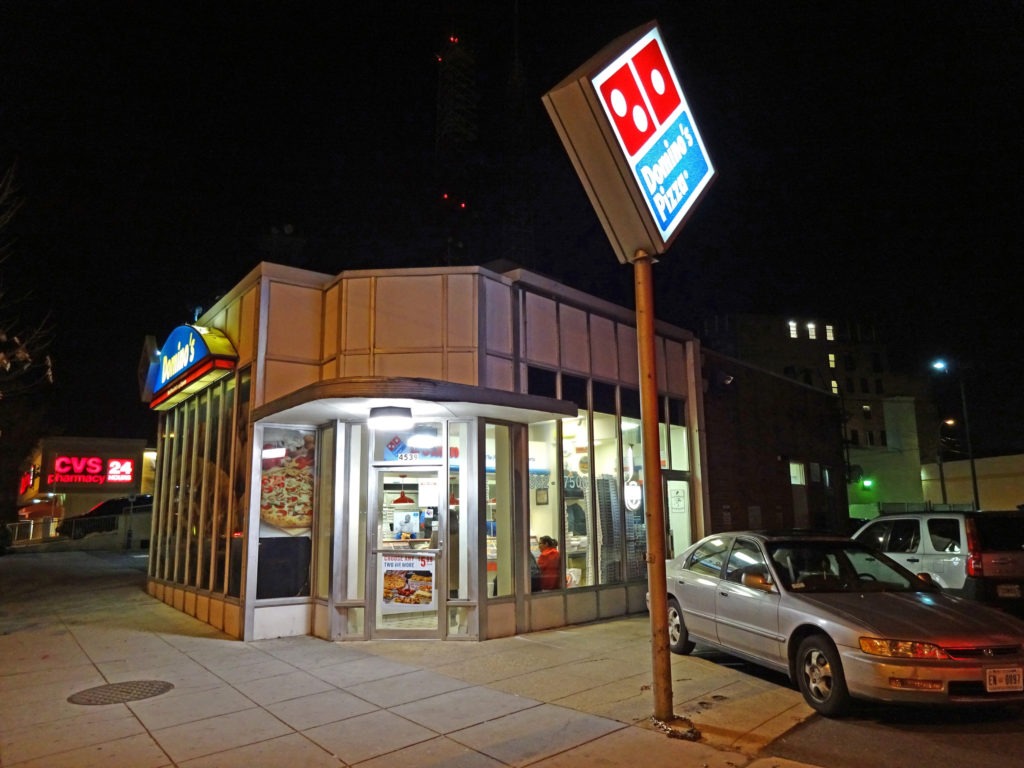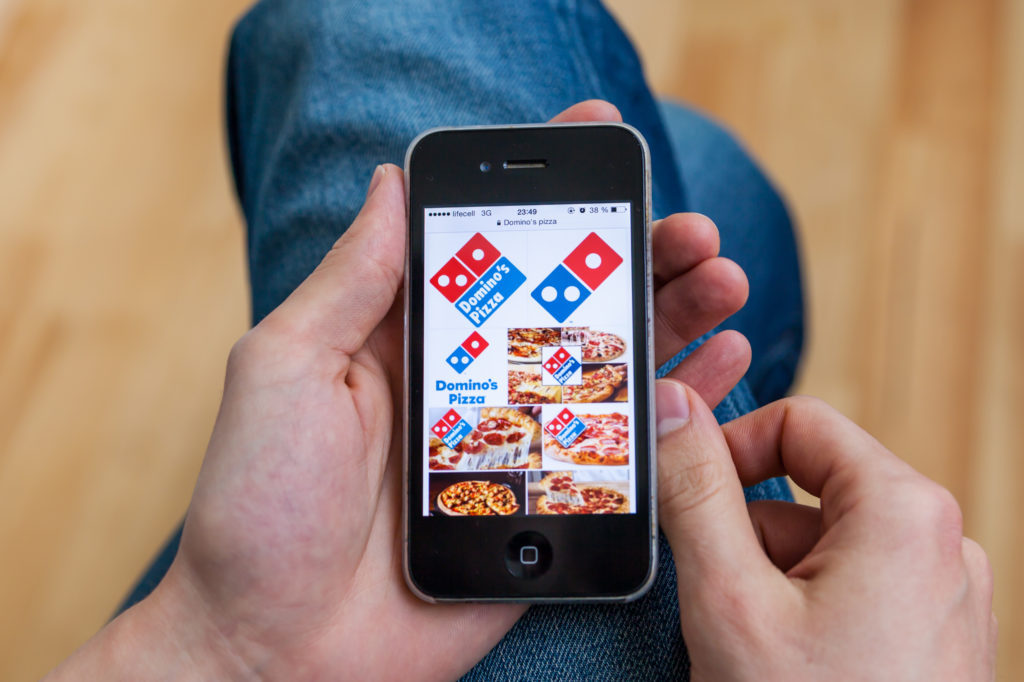
There are times when damaged brands come to that painful crossroads.
Do they simply find the next promotion, contest, or feature, hoping that consumers will forgive past mistakes and transgressions? Or do they take the more extreme step of admitting fault, regrouping, and relaunching with an audience-driven solution?
It’s always much easier to find a new gadget or gimmick – more commercial-free hours, music stunts, contests and giveaways – and hope they can effectively paper over a brand’s existing problems. It’s much harder to retool, reimagine, and retrench.
Some believe this is the question now facing the radio broadcasting industry – do companies simply move their focus and investment over to digital and new entertainment options? Or is it still possible to address some of the fundamental issues facing their bread and butter product – radio?
That’s the decision that was squarely in Domino’s Pizza’s windshield a decade ago. The brand was a huge deal in the 1960’s when it launched, a dominant comfort food option. Over time, Domino’s slowly evolved into a very traditional brand. Like radio, Domino’s got whacked by the Recession. But their pizza also lost its edge, falling into a tie for last place with pizza from Chuck E. Cheese in an industry taste test.
The plan?
Own the reality the pizza product was lacking, and then commit to making it better.
A great case study from The Motley Fool hosted by Dylan Lewis lays out Domino’s trajectory for getting back in the game after years of lackluster performance.
Yes, Domino’s conducted focus groups – a lot of them – and management sat and watched consumers rip their pizza apart. In and of itself, that’s not a very out-of-the-box exercise. Many radio people have conducted focus groups after going astray, too. It can be painful to hear once-loyal fans criticize a station for losing talent, playing the wrong music, or other screw-ups.
In Domino’s case, the complaint they heard most – “Your pizza tastes like cardboard” – was a starting point, but not the only problem their team faced in regaining lost customers and their industry competitiveness. It was the radio equivalent to “You play too many damn commercials.” Whether you’re talking carry-out food or audio entertainment, they were facing serious negatives.
It’s one thing to commission unvarnished research – the type where customers go off on your brand. It’s another to put those brickbats on TV. But that’s what Domino’s opted to do in an effort to rip off the band-aid, and start from Square One. In other words, admit their mistakes, market them, and then solve their problems – with the help of these same consumers. They edited their focus groups and featured disgruntled fans, along with their devastated food preparation teams.
Reply with  if you just wanna pizza pie. #NationalPieDay pic.twitter.com/OqOsBM2F6Z
if you just wanna pizza pie. #NationalPieDay pic.twitter.com/OqOsBM2F6Z
— Domino’s Pizza (@dominos) January 23, 2020
Yet, there was hope. Like many traditional radio stations, lapsed Domino’s fans had a special place in their hearts for the brand. Many grew up eating their pizza, usually in fun situations – parties, picnics, holidays, reunions, card games, and other get-togethers with friends and relatives.
Yet, marketing your negatives before turning them into positives? They called it “radical authenticity.” Now, you can write this up as just another buzz phrase. But it took courage for Domino’s to embrace this uncommon approach to their eventual turnaround. When you think about it, neither the word “radical” nor “authenticity” is heard with much frequency in radio circles.
Domino’s realized just marketing to their “cume” wouldn’t be enough. So, they worked on the big challenges – like improving their recipe. After all, the pizza and the way it looks, feels, and tastes is the most important thing.
But then they did a deep dive into digital, making it seamless and simple to order a pizza (and other food items) online on virtually every platform and gadget (their website, app, via Twitter or Facebook Messenger, Alexa or Google Home – you name it). Lewis calls this “omni-channel” marketing, a way to remind consumers of the brand’s commitment to order pizza in the least complicated, frictionless way.
And of course the residual benefit of using online tools to order and deliver pizza is the ability to gather more data, making it easier to streamline the process, while effectively marketing to fans. Lewis notes the plan was to create more and more touchpoints with consumers, rather than forcing them to pick up the phone and order pizza the old-fashioned way.
 Domino’s made a huge investment in their digital assets, rather than merely checking off another box. I am not a pizza aficionado by any stretch of the imagination. But Domino’s process and digital interface looks to be one of the best in the industry.
Domino’s made a huge investment in their digital assets, rather than merely checking off another box. I am not a pizza aficionado by any stretch of the imagination. But Domino’s process and digital interface looks to be one of the best in the industry.
Domino’s also used another tool we’ve written about a lot in this blog: crowd-sourced marketing, using real consumers to take photos of the pizzas delivered to their homes, offices, and parties. This level of engagement was another touchpoint for the brand, and an additional way of connecting with their customers.
And what followed was quirky marketing that resonated with the resurgent brand. And as the pizza chain regained its equilibrium and began to expand again, they turned their attention to secondary slices of the “pyramid,” including community involvement.
Lewis talks about a “Paving For Pizza” promotion where customers let Domino’s know about local roads that need repair  work. Like radio, Domino’s is a brand dependent on people in cars – whether it’s their delivery brigade or customers driving over to pick up their orders.
work. Like radio, Domino’s is a brand dependent on people in cars – whether it’s their delivery brigade or customers driving over to pick up their orders.
What does paving roads have to do with making pizzas? It’s a good will gesture, it’s community focused, and it’s buzz-worthy.
All these efforts have produced massive amounts of “earned media” for Domino’s. That equates to other media outlets providing free coverage for their exploits, stunts, quirks, and marketing. As radio marketers know, it’s always optimal when local (or national) media turn their attention to your brand, your personalities, your events, and your community support. And do the heavy lifting for you.
If you Google the brand, you’ll see much evidence Domino’s master plan has worked, netting the company scads of publicity whose value is impossible to measure.
And of course The Motley Fool video at the bottom of today’s post is more evidence Domino’s “radical authenticity” plan is working like a charm, not to mention blogs like this one.

But for those of you stuck on data, it’s important to realize Domino’s didn’t just grow its Instagram “likes,” YouTube subscriptions, or pave a bunch of streets.
Back in 2009 when they realized they had serious issues, Domino’s had 9,000 stores in the U.S. Now, they’re up to 16,000, including pizza stores all over the globe.
In that same period, revenue has more than doubled from $1.4 billion to $3.5 billion. And their stock price has exploded, up 2,500% over the past decade.
Not bad for a company that showed its “radical authenticity” by owning up to its baggage, fixing its problems, committing to digital, and brilliantly marketing its efforts.
If that sounds like something an industry near you ought to be thinking about, let’s order a pizza on our phones and talk it over.
Read more: jacobsmedia.com
